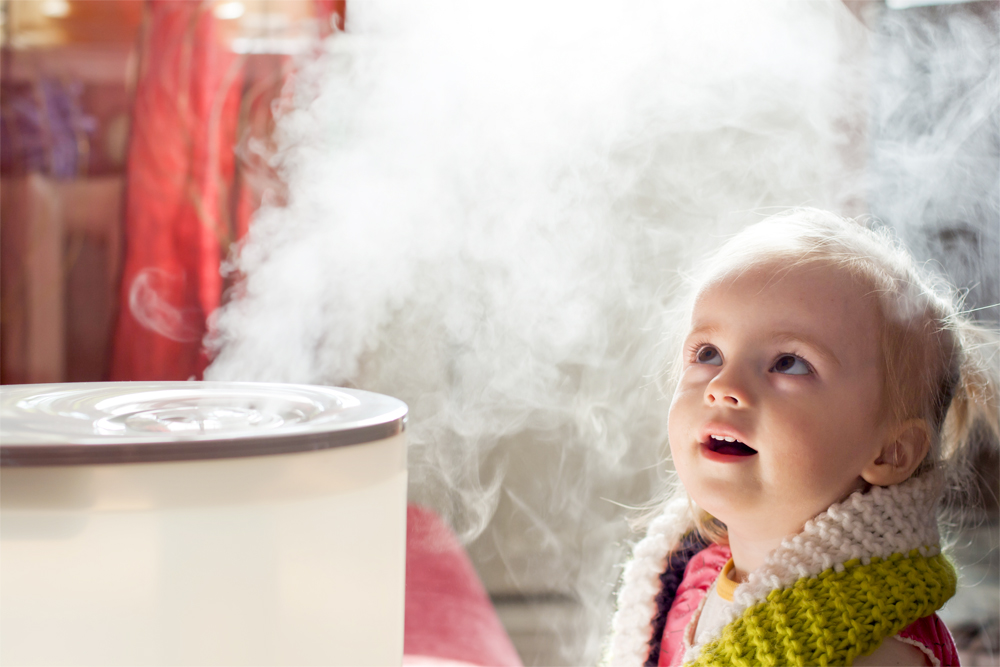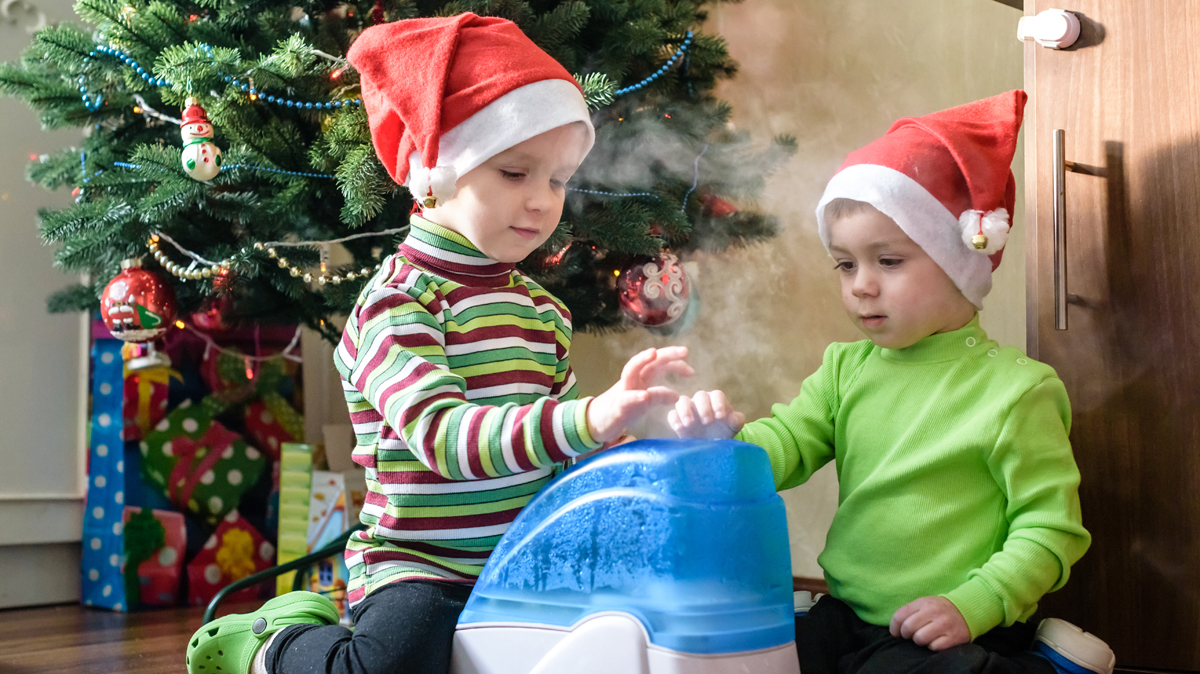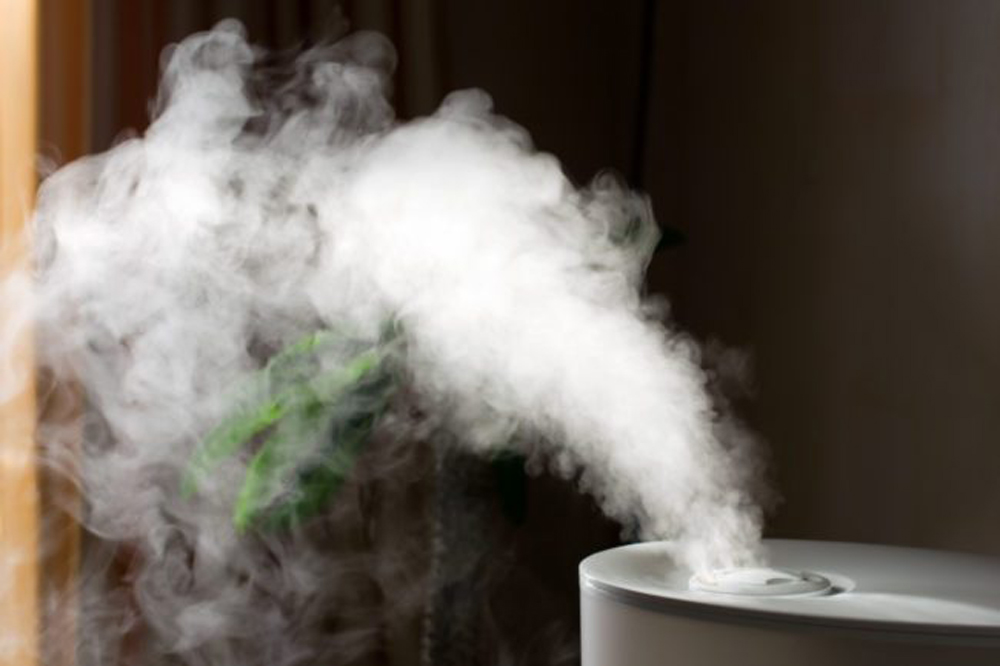Summer is nearly upon us and so is the heat. That means people across the country will be cranking their ACs. Despite the hot and sticky outdoors, air conditioners dry out the inside of your home.
That’s why it’s good to concurrently run a humidifier. But what is a humidifier and how do you use one?
What is a humidifier?
You’re probably familiar with dehumidifiers, but what exactly does a plain old humidifier do. Well, it does what you’d expect it to.
Whereas a dehumidifier removes moisture from the air, a humidifier adds to it.
A humidifier is a device used in and around the home that produces water vapor and increases the relative humidity level within your home.
If you plan to use a humidifier in your home, you need to be aware that the ideal humidity level within your home is around 40%.
In order to measure this, you should purchase a digital hygrometer or be sure to get a humidifier that has one built in.
Do you need a humidifier?
You may be asking: Why would I want a humidifier in the first place?
It depends.
In fact, having and running a humidifier could potentially cause more problems than they solve if not run properly. But for others, a humidifier may very well mean the difference between agitation and relaxation around your home.
If you’ve ever found yourself experiencing allergy-like symptoms inside your home, then a humidifier might be right for you. Those itchy eyes or sore throat might be the side effects of dry air in your home.
By learning how to use a humidifier, you can alleviate and quite possibly eliminate these problems altogether.
Humidifiers in the Summer
Types of humidifiers
There are a variety of humidifiers on the market and understanding the different types will help you choose which one is right for you.
- Vaporizers. This is probably the most commonly known humidifier. It involves heating water until it vaporizes.
- Evaporators. These use a fan that blows air over a wet, absorbent material like a wick, adding moisture to the air.
- Ultrasonic humidifier. This type of humidifier uses fast, tiny vibrations that turn water into vapor. They’re quiet and among the safest types of humidifiers.
- Impeller humidifier. This one has a rotating disk that functions a lot like the ultrasonic. The motions of the disk turn water into vapor.
- Central humidifiers. This is the most “industrial” type of humidifier and is built into your heating and cooling system. Contact your local hvac specialist if you’re interested.
As you can see, buying a humidifier is not as simple as it sounds. Once you’ve settled on the right one, running it is pretty simple.
How to use a humidifier
1. Put it in a safe location
Make sure that your humidifier is in a waterproof location out of the reach of children. Certain types of humidifiers can get hot, and you don’t want your little one to get hurt.
Humidifiers also create a lot of condensation in and around them. If you’re setting your device on a wood surface, be sure to place a tray or piece of plastic beneath.
You’ll also want to point it so that the vapor shoots away from any electrical outlets.
2. Use cold or room temperature water
Have you ever noticed a thin layer of black flecks at the bottom of your humidifier after you’ve run it? Or maybe you’ve noticed a white crusty layer forming on it?
These come from minerals in the water, and there are more minerals in hot water than in cold. Cutting back on minerals means that less bacteria will form in your humidifier, thus extending it’s life.
3. Only use it when you need it
Humidifiers are great for helping alleviate allergy symptoms or battling dryness caused by air conditioners. But running it too much can cause mold or mildew to form in your home if you aren’t paying attention to humidity levels.
This takes us straight into some common humidifier mistakes that need to be avoided.
Mistakes to avoid
1. Not paying attention to humidity levels
As previously mentioned, the ideal humidity level in your home is 40%. Anything, and you could experience allergy symptoms. Any more, and you’ll start seeing condensation on the walls.
There is a range, of course. Some people recommend between 30-50%, but it’s better to aim for 35-45%.
40% is the magical number, so being within a few percents of it is perfectly fine.
2. Not cleaning the humidifier often enough
Mineral buildup can cause more problems than just an increased level of bacteria. It can also clog the pathways within the device itself, which can lead to overheating.
Overheating, then, can mean electrical problems, device failure, and, in worst case scenarios, a fire in your home.
As with any electrical device, maintenance is a must.
3. Using the wrong type of water
Most of these mistakes all stem back to those pesky minerals that are found naturally in our water.
Using tap water means that minerals will be present. But you can avoid minerals altogether by using only distilled or purified water in your humidifier.
4. Not emptying the tank daily
Failing to completely empty your tank and wash it out before each use is one of the leading causes of bacteria buildup. Stagnant water is a breeding ground for the stuff.
Adding new water to a mostly empty tank doesn’t kill the bacteria. It just gives it more room to grow.
5. Not cleaning and drying the humidifier before storing it
You wouldn’t put a wet towel back in the closet, and you shouldn’t put a wet humidifier back in the box.
Doing so traps in the moisture, giving it nowhere to escape. Wash your humidifier out, and then let it dry completely before storing it.
Tell us about your experience
Do you have a humidifier? What type did you get?
Have you seen a noticeable difference in your air quality while using it?
We want to hear from you. Drop us a note in the comments below.
If you have any questions or are interested in getting a whole-house humidifier installed, don’t hesitate to contact us. Our agents are ready and willing to assist you.






2 Comments
Chris Hegel
How does it make sense? I see all these small devices that will cool a room in like 5 minutes, using water to humidify the air. Then I know my air conditioner cools and takes the humidity out of the air. Is that not spending energy to counteract the opposing device?
Traver Freeman
Humidity serves a vital function in your home. Removing it can have adverse health effects for certain individuals. The intent of the A/C is not to remove humidity but to cool the home. A side effect of that cooling process is dehumidification. Running a dehumidifier alongside your A/C would be fruitless, of course. But if you or a family member are in need proper humidity balance, then running the humidifier doesn’t counteract the A/C.
The key is not to run the humidifier constantly, but to monitor humidity levels and keep them between 30-50%.
Comments are closed.